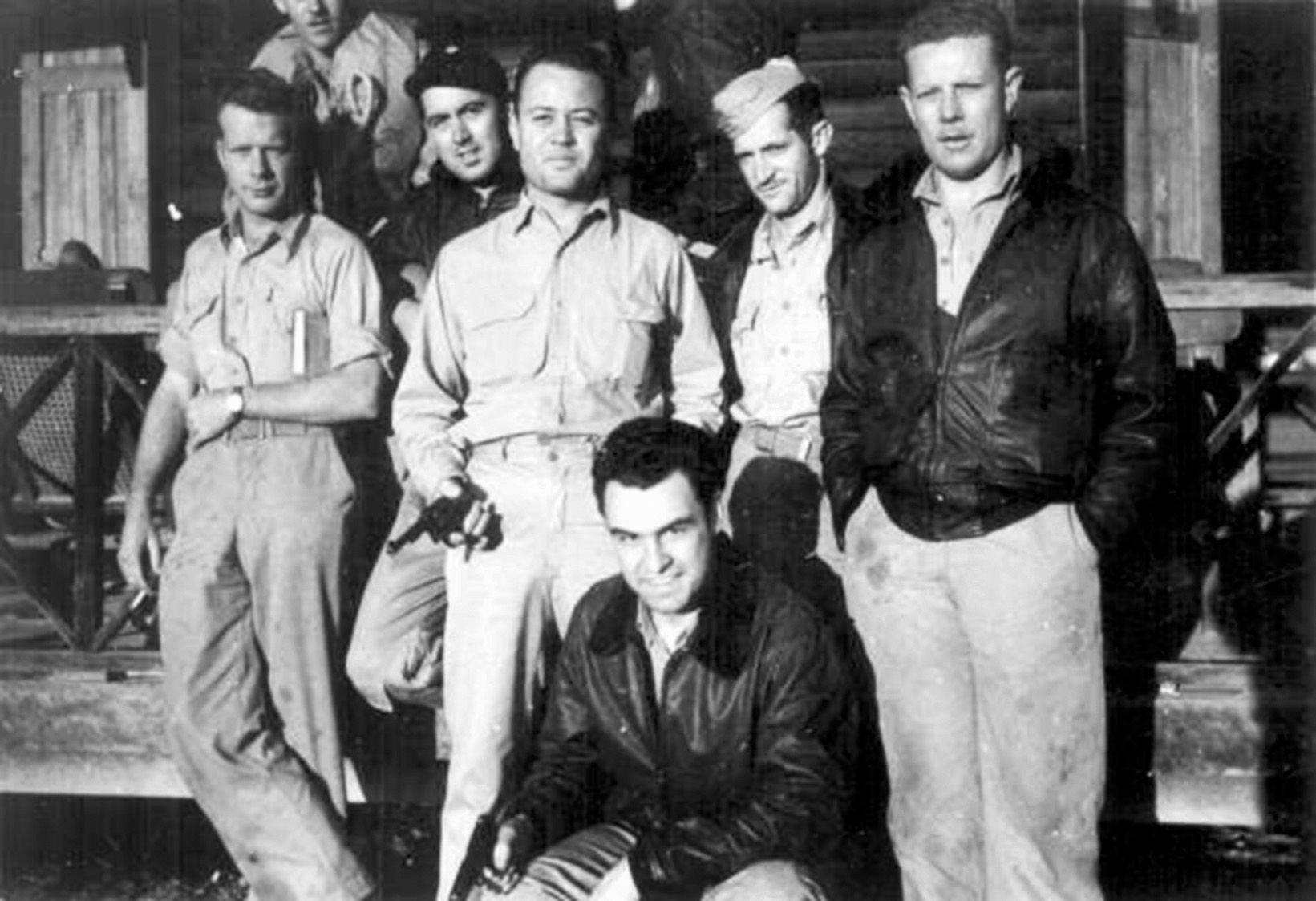During Gregory Boyington’s brief, tempestuous career with the AVG, he was responsible for losing more airplanes than he shot down.
Gregory Boyington is best known as the hard-living leader of Marine fighter squadron VMF-214, the “Black Sheep” celebrated in books and a TV series, and for earning the Navy Cross and Medal of Honor while fighting the Japanese in Vought F4U Corsairs in the South Pacific. But before he led the Black Sheep and was known as “Pappy,” Boyington spent five months in Curtiss P-40s as a Flying Tiger with the American Volunteer Group in China. It was not a happy experience—for Boyington or the AVG.
In August 1941, Boyington was serving as an instructor in primary trainers at Naval Air Station Pensacola when he heard that Colonel Claire L. Chennault was recruiting pilots for the AVG to help defend China against the Japanese. For Boyington, a Marine Corps first lieutenant, it must have seemed a heaven-sent opportunity. His career was in trouble, and his personal life was unraveling. Though he was already known as a drinker and a brawler, finances were his biggest problem. He suffered from what he called “a fatal gap between his income and accounts payable,” with so many bad debts that he had to send Marine Corps Headquarters a letter each month detailing how much he was paying on each of his many loans. The AVG recruiter was offering $675 a month for a flight leader slot, with a bonus of $500 for each Japanese airplane he shot down. Boyington jumped at the chance.
Carrying a passport identifying him as a “member of the clergy,” he left San Francisco on the Dutch liner Boschfontein with the last big contingent of pilots to join the AVG. He reached Rangoon on November 12, 1941, and that afternoon traveled by train to the AVG training base at Toungoo, in central Burma. Assigned to the 1st Pursuit Squadron, the “Adam and Eves,” Boyington checked out quickly in the P-40C Tomahawk. He had five years of flying experience, much more than most of the other pilots in the group, and he was the only pilot who had given up a regular military commission to join the AVG.
On December 7, the Japanese navy attacked Pearl Harbor, their army moved into Southeast Asia and the United States was officially involved in World War II. After a series of false alarms at Toungoo, Chennault sent the AVG’s 1st and 2nd squadrons to defend Kunming, China, on December 18, and the 3rd “Hell’s Angels” Squadron to Rangoon to help the British defend the city. When the AVG’s first action came on December 20, at Kunming, Boyington was off duty and listened to radio reports as his squadron mates engaged the Japanese bombers—and scored their first victories.
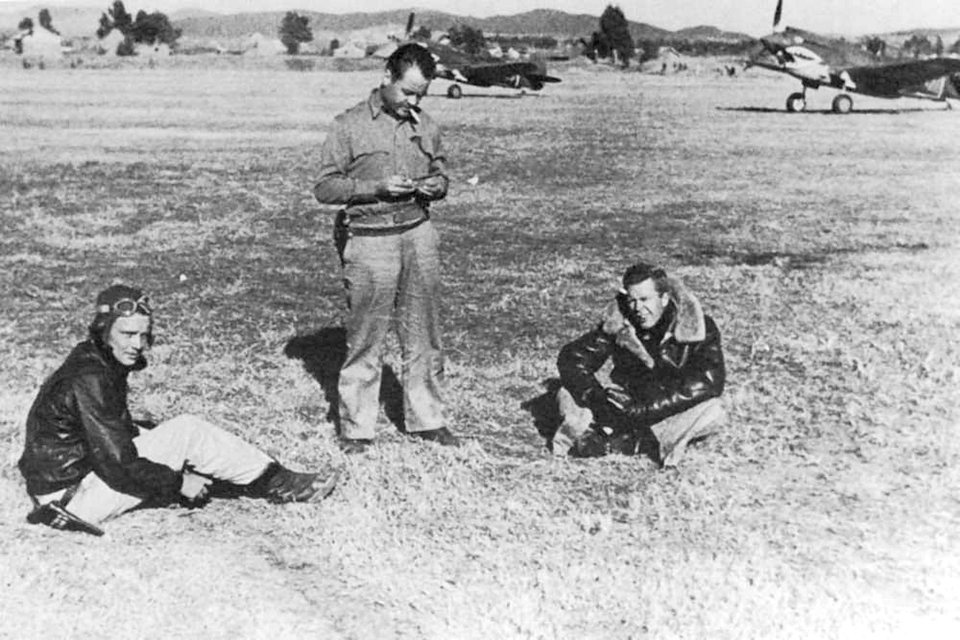
For the next few weeks, Boyington’s war was confined to scrambling after high-flying airplanes that never came close enough for him to intercept. As he saw it, “Our Adam and Eves might just as well have been back in the United States blowing bubbles in the bathtub.” The real action was at Rangoon, where the AVG 2nd “Panda Bears” Squadron had replaced the 3rd Squadron, with its pilots racking up kills against huge formations of Japanese aircraft.
Boyington would get his chance in late January, when 1st Squadron pilots were sent to reinforce the Pandas. He saw his first combat action on January 26, 1942, just 12 hours after reaching Rangoon. Eleven P-40s went up against 20 Nakajima Ki-27s (later code-named “Nates” by Allied intelligence), and Boyington was suckered into trying to dogfight them—twice.
In so doing, he totally ignored Chennault’s dictum not to try to turn with the nimble Japanese fighters. Back in the U.S., Boyington could out-turn the best Navy pilots, but a P-40 could not outmaneuver a Nate. “Tracers were getting closer,” he later wrote. “Finally I was looking down someone’s gun barrels.” He dived away and headed back to Mingaladon airport. “I hated myself so badly,” he commented, “I didn’t even bother to write up my first combat report.”
The Japanese came back over the next several days, but Boyington was either not flying or too far away to engage them. Finally, on February 6, he was one of a half dozen Adam and Eves scrambled against 25 incoming Nates of the Japanese army’s 50th and 77th regiments. This time he avoided dogfighting. Boyington spotted one Japanese pilot “not paying attention…put a burst or two into his fuselage,” and watched him go down in flames. Then, he recalled, “I saw another safe shot…this plane also went earth-bound, twisting crazily and burning like a torch.”
Those two Nates are Boyington’s only confirmed victories over Rangoon, and they represent his sum total with the AVG. He wrote of other victories over Rangoon, including three on one day in mid-February, but while his description of the action is vivid, the dating of it isn’t clear. There is no record of those three kills.
The Adam and Eves were credited with a total of seven Japanese fighters on February 6—two each for Boyington and Robert Little, and one each by Robert Neale, Robert Prescott and William McGarry, plus a probable for Charles Bond—while British Hawker Hurricane pilots of No. 17 Squadron, who were also involved in the fight, claimed three more confirmed, three probably shot down and three damaged. One AVG and two British pilots were slightly wounded, but promptly returned to duty.
On February 7, the 1st Squadron’s leader, Robert “Sandy” Sandell, died in a crash. Bob Neale replaced him and appointed Boyington as his vice squadron leader, a decision apparently based on Boyington’s overall flying experience. Neale would soon regret it. Boyington was back to drinking heavily, and after a big party on Valentine’s Day, he arrived late for alert duty the next morning and “had a hell of an argument” with Neale in front of the other pilots.
In his diary, Charlie Bond noted that Neale had already been ignoring Boyington, and “the drinking party finally brought everything out in the open.” Neale soon distanced himself further from his deputy. After the evacuation of Rangoon started, on February 23 Neale sent Boyington with six P-40s to Magwe in central Burma to fly protective cover over an AVG road convoy moving north. This effectively cut Boyington out of several big actions over Rangoon that would come at the end of the month.
When the road convoy escort mission ended on February 26, Boyington continued on to Kunming. Two days later, Generalissimo Chiang Kai-shek and Madame Chiang hosted a banquet for the Flying Tigers while passing through Kunming. Robert Layher remembered, “The Generalissimo gave us silk scarves with his chop on them and the Madame made a little address in which she called us her ‘angels, with or without wings.’” Boyington stayed in the bar, drinking his way through dinner and the speeches. He had little regard for the Chiangs, “the famous couple,” as he called them.
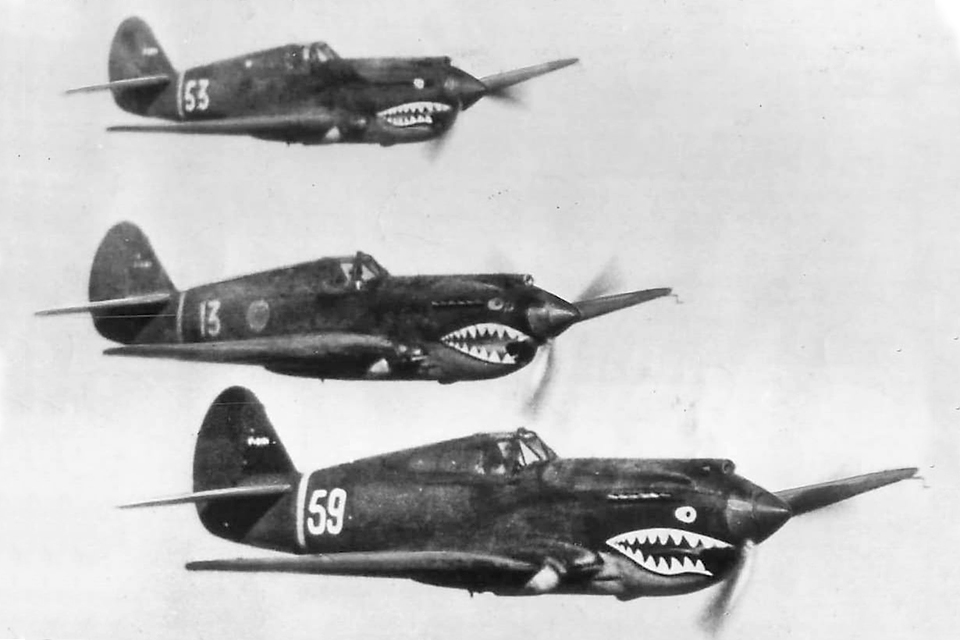
There was another banquet when the Chiangs came through Kunming again several days later. It is not clear if Boyington attended the second dinner, but the next morning, March 5, he was one of six pilots on duty at the airfield when AVG executive officer Harvey Greenlaw came to the alert shack and told the pilots that Generalissimo and Madame Chiang were to depart in the next hour, and he wanted them to fly a little farewell exhibition while the Chiangs boarded their airplane. He explained that once the general’s Douglas DC-2 was in the air, the P-40s would join up and escort it part of the way to Chungking.
“The catch was no one told us where we were going,” Boyington wrote. “Each thought the other might know, or at least the leader might know, so we did not bother to find out.” Bob Layher, however, recalled that the instructions were very explicit: “Greenlaw explained that our P-40s would escort them just 90 miles east of Kunming, where the Generalissimo’s transport would turn northeast and head for Chungking. At that point they would be out of range of Japanese fighters based in northern Thailand and French Indochina, and we would turn back.”
While the Chiangs stood by their transport saying goodbye, the six P-40s flew overhead in tight formation. Frank Lawlor was in the lead, with Boyington on his wing. The second flight was Gil Bright and Henry Gesselbracht; the third Albert Probst and Layher. As the general’s party started to board the DC-2, Lawlor led the others in a “string” formation. They would fly over the DC-2 in line, and in turn each P-40 would do a slow roll.
“The airfield at Kunming is at 6,000 feet,” Layher recalled. “The air is a little rare up there, and we were fully loaded with ammo and fuel.” Lawlor was the first to roll, and when he did so the storage compartment door behind his cockpit opened, giving him no choice but to return to base and land. That left his wingman, Boyington, in charge of the flight.
The P-40s continued their slow rolls, with Layher—at the tail end—slowing to keep his interval. Layher said: “I was almost hanging on my prop, just a little above stalling speed…I did my roll, right over the Generalissimo. Two hundred feet above the ground and I stalled out completely….I went back to the basics: needle, ball and airspeed….I was just 20 feet above the ground. It took me about a quarter of a mile to get up enough speed to climb out.” When Layher disappeared behind the trees everyone thought he had crashed, but he finally rejoined the flight. With Boyington in the lead, the five P-40s waited over the field for the DC-2 to take off. Once it was in the air, the Tomahawks fell in behind.
Ninety miles east of Kunming the transport turned northeast toward Chungking. But instead of turning back to Kunming, Boyington led the P-40s after the DC-2. “We would find out later that he had not been paying any attention to Greenlaw’s instructions,” Layher said. “To make things worse, this was March, and the monsoon winds were blowing out of the northwest. The wind was very strong and we were drifting 15 degrees at least, just to keep our heading.”
The P-40s had commercial radios that rarely worked. “We tried every which way to get Boyington’s attention,” Layher continued. “We tried hand signals, with no success. We flew as far west of Boyington as we could to try to get him to come in close, but he paid no attention to us. Our cardinal rule was to follow the flight leader. And so on we went.”
Boyington later wrote that after flying for two hours, “it finally dawned on me that the…transport might be bound for Chungking,” and he turned back toward Kunming. Neither his compass nor his radio was working, he recalled, and it was clouding up. “The whole thing became a race between the clouds and our remaining gas. The gas finally won….”
When he turned back toward Kunming, Boyington took a reciprocal course. The result, according to Layher, was “that while we were drifting 15 degrees going north—now that we were turned south, that error was compounded and we were 25 to 30 degrees off course.”
Layher was the first to run out of fuel. Below him there was nothing but rugged hills—until he spotted what he described as “a nice little green valley.” He approached with his landing gear down, but at 500 feet he saw the irrigation ditches that cut across his path, each with a 4-foot-high berm. He retracted the gear just as his engine quit, and his wheels were folding back when the P-40 touched the first berm and was launched back into the air, “just like a ski jump.” His airplane sailed over three berms before it came to a stop.
Boyington and the three others went on another 75 miles before they all bellied into a cemetery on top of a hill near the town of Wenshan. There was no room to stop, and they ground-looped their airplanes. All four P-40s were damaged, two beyond repair.
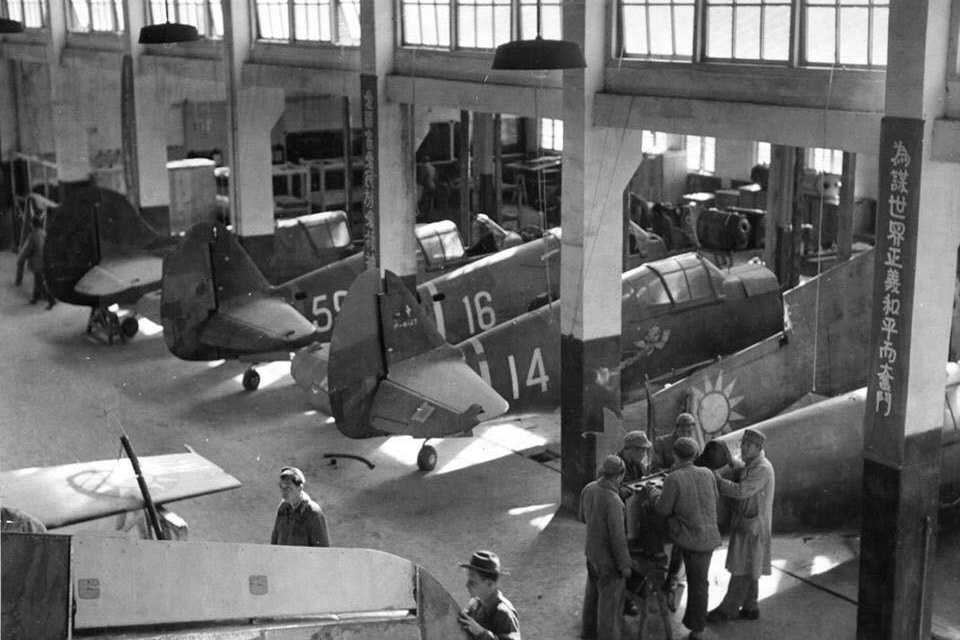
It took days for the five pilots to make their way back to Kunming, where, as Boyington noted, “our reception was very cool.” Chennault had dinner with the pilots the following night to “hear about the whole fiasco,” and Boyington felt the full weight of his bungling. He wrote, “Because of my apparent blunder, in getting lost and so on, I volunteered to fly these airplanes out of the cemetery…if they could be put in running order.” Chennault took him up on the offer.
After a lot of work, two of the aircraft were flyable. They were stripped and fueled with 30 gallons, enough to reach the nearest friendly airfield at Mengzi. The Chinese had cut a takeoff strip through the cemetery that ended abruptly at a cliff. Boyington noted that when he took off in the first P-40, “the craft dropped nearly fifty feet, nose high, and I sluggishly wobbled about a mile at full throttle before getting my plane under complete control.” AVG crew chief Frank Losonsky, on hand to salvage the Tomahawks, later marveled at “how he flew those aircraft off that mountain strip.”
Back in Kunming, Boyington was far from happy. He was an “enemy ace” now, responsible for the loss of five AVG airplanes. Even within his own squadron he wasn’t popular. Then he learned that Bob Neale wanted Charlie Bond to be his vice squadron leader, and tried to goad Bond into a fistfight.
Things looked brighter on March 20, when Boyington was one of 10 pilots—the “pick of the First and Second Squadrons,” Chennault called them—chosen for a raid on Chiang Mai, Thailand. It would be an excellent opportunity to destroy a large number of enemy planes on the ground. Chiang Mai was 165 miles inside Japanese lines, so the Flying Tigers would not be expected.
The Chiang Mai raid turned out to be one of the AVG’s most successful missions, but it was a personal disappointment for Boyington. The raiders caught the Japanese on the ground, their airplanes lined up wingtip to wingtip, and left the airfield in flames. Bond was sure they had destroyed at least 25 of an estimated 50 enemy planes. Boyington made two strafing passes and claimed seven destroyed. Later the AVG claims board would credit the raiders with 15 aircraft, divided between all 10 pilots on the raid. Boyington saw his claim for seven destroyed become 1½. At $500 each, he received $750 instead of the $3,500 he’d been expecting.
After the raiders got back to Kunming, Chennault called a meeting to give the lowdown on the AVG’s “imminent induction into the U.S. Army Air Corps.” Boyington believed that when he signed on with the AVG, he had a written agreement that he would get his regular Marine Corps commission back. He questioned Chennault about it, and was brusquely told, “Everybody is to be commissioned in the Air Corps.” “My thoughts were really tangled up by this time,” Boyington recalled.
When a call came for volunteers to help the 3rd Squadron at Loiwing, Boyington went along, remarking, “I figured that I was going to stay a while.” Just days after arriving, however, he was taking off when his engine “coughed its last,” as he put it, and his P-40 slammed into a rice paddy. His seat belt broke, his head was cut by the gunsight and his knees slammed into the instrument panel.
Witnesses said Boyington had been drunk when he tried to take off. Crew chief Leo Schramm, who watched the Tomahawk go into the rice paddy, recalled that he ran toward it as Boyington “emerged from the wreckage…ran straight for a water truck that was parked nearby, started it up and raced away from the base.” He was gone for hours. The missing truck was found at the base of a huge tree that he had hit. “Apparently he was not satisfied destroying just an airplane,” Schramm wrote.
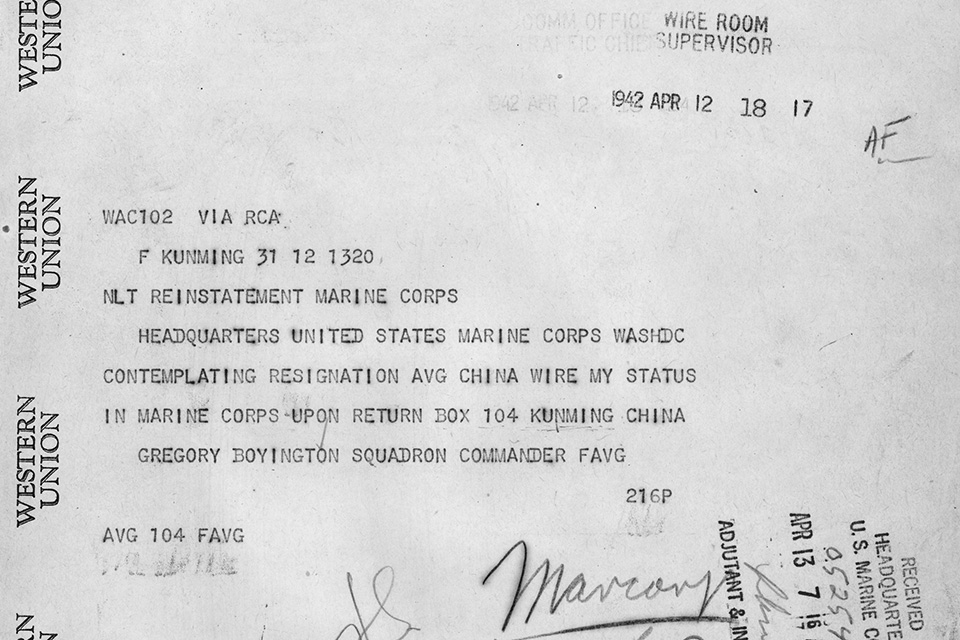
After that incident, Boyington attended a wedding celebration for AVG pilot Fred Hodges at the Loiwing America Club. He showed up wearing a bathrobe (his knees were swollen, he said) and started drinking heavily. Then the air-raid warning sounded, and Boyington tried to locate a trench in the dark, falling down a hill. This time his injuries looked serious, and he was flown back to Kunming.
Boyington spent almost two weeks in the AVG’s small hospital there, but still managed to get in trouble. While he was visiting the AVG hostel one day, supply officer C.B. “Skip” Adair reported that someone broke into the bar—“twisted the lock off the door with his bare hands.” Adair noted, “Only one guy in the Group can do that, and that’s Boyington,” and he threatened a “trial.” In the end nothing came of it, but Boyington was finished with the AVG. As one of his last friends in the group, the executive officer’s wife Olga Greenlaw, was boarding a plane to Loiwing, he said goodbye and whispered: “They’re ganging up on me here, Olga. Next time I’ll fool ’em—I’ll resign.” She warned him against doing that, since it would mean a dishonorable discharge. A few nights later, when Bob Neale accused him of drinking on night alert, Boyington picked up some car keys and announced he was driving to the adjutant’s office to resign. “I guess that’s what you all want,” he said.
Boyington resigned from the AVG on April 2, 1942. He was dishonorably discharged for “having terminated his contract…in time of war and with the Group in contact with the enemy.” He paid his own way home.
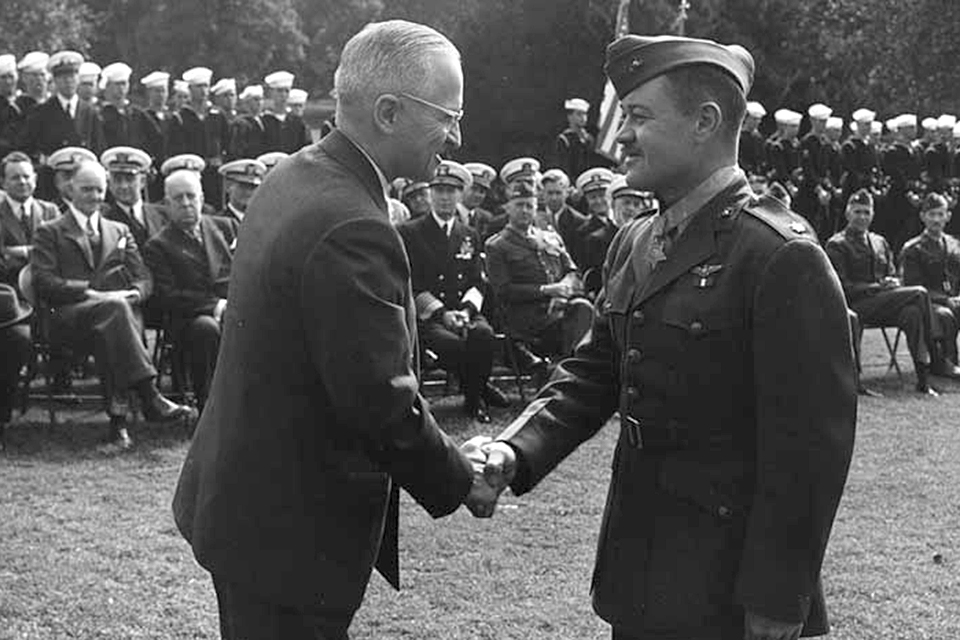
Bob Bergin is a former U.S. Foreign Service Officer and Southeast Asia specialist who writes about aviation history in Southeast Asia and China. Further reading: Baa Baa Black Sheep, by Gregory “Pappy” Boyington, and Black Sheep One: The Life of Gregory “Pappy” Boyington, by Bruce Gamble.
This feature originally appeared in the January 2011 issue of Aviation History. To subscribe, click here!

